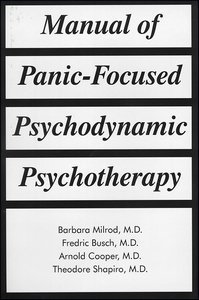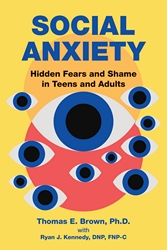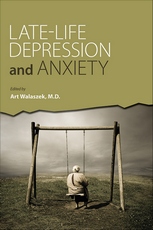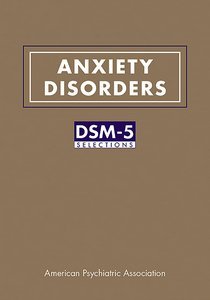Manual of Panic-Focused Psychodynamic Psychotherapy
View Pricing
Description
Despite the enormous progress in the pharmacological and cognitive-behavioral treatments of panic disorder over the last 30 years, these treatments often provide only temporary or partial relief and many patients continue to experience persistent anxiety symptoms after the discontinuation of treatment. Substantial evidence exists that intrapsychic conflict and characterological features play a central role in the genesis and onset of panic disorder as well as the frequency of relapse after the termination of treatment. Many clinicians believe that psychodynamic psychotherapy is the best-suited approach to address these issues.
Based on extensive clinical experience and written by distinguished experts in the field, the Manual of Panic-Focused Psychodynamic Psychotherapy is the first manual to comprehensively examine the usefulness of exploratory psychotherapy in the treatment of panic disorder. It suggests that psychodynamic approaches can aid both psychopharmacological and cognitive-behavioral treatments and can often resolve panic symptoms in many patients when used as the sole treatment modality. The authors catalog psychological factors commonly present in panic disorder patients and describe how to address them within a psychodynamic psychotherapy. A wealth of clinical vignettes and a complete case example illustrate the psychodynamic approach to this disorder. Other treatment issues including defense mechanisms, transference, termination of treatment, and the use of this method in conjunction with other therapeutic approaches are also covered.
Contents
- A psychodynamic formulation for panic disorder. Overview of treatment. Initial evaluation and early sessions. Psychodynamic conflicts in panic disorder. Defense mechanisms in panic disorder. Transference, working though, and termination. Techniques of psychodynamic psychotherapy as they apply to panic disorder. Approaches to common problems in the treatment of panic patients. Combining panic-focused psychodynamic psychotherapy with other treatment approaches. Case example: Ms. P. References. Index.
About the Authors
Barbara Milrod, M.D., is Assistant Professor of Psychiatry at Cornell University Medical College, New York, New York, and a member of the New York Psychoanalytic Society.
Fredric Busch, M.D., is Instructor of Psychiatry, Cornell University Medical College, New York, New York, and Faculty Member at the Columbia University Center for Psychoanalytic Training and Research, New York, New York.
Arnold Cooper, M.D., is Stephen P. Tobin Professor Emeritus of Consultation-Liaison Psychiatry at Cornell University Medical College, New York, New York, and Training and Supervising Psychoanalyst at the Columbia University Center for Psychoanalytic Training and Research, New York, New York.
Theodore Shapiro, M.D., is Professor of Psychiatry in Pediatrics at Cornell University Medical College, New York, New York, and Supervising and Training Psychoanalyst at The New York Psychoanalytic Institute, New York, New York.
Related Products
Carousel Control - items will scroll by tabbing through them, otherwise arrows can be used to scroll one item at a time








